Canning, to me, seems like an old-fashioned skill that’s gone by the wayside for most Americans living in 2010. I’m sure more people do it than I realize, but when my friend Glenda mentioned that she was going to can peaches, I thought it would be fun to learn.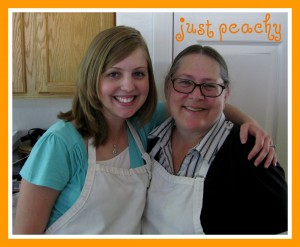
She met me outside and informed me that she had a lot to teach me. I donned a white apron and the domesticity began! Now, I don’t claim to remember all the steps, so this post is definitely NOT a tutorial on how to can peaches. Hopefully I’ll hit the highlights though.
Glenda’s family has been canning for generations, so it was fun to learn by using her grandmother’s canner. We used the water-bath method of canning. Before I arrived, Glenda had already put the jars in the water to be boiled clean.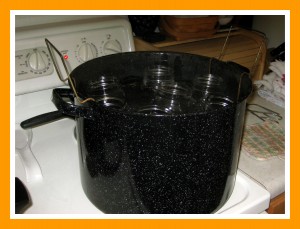
The first step she had me do was to put the ripe peaches in a pot of hot water, not to cook them, but to loosen their skins. Next we put them in a bowl of cold water, and then proceeded to rub the peels off.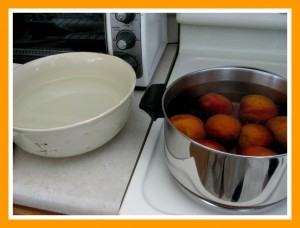
We pitted and cut the peaches into quarters and put them in a bowl of water that contained Fruit Fresh, a powder that helps preserve the peachy color.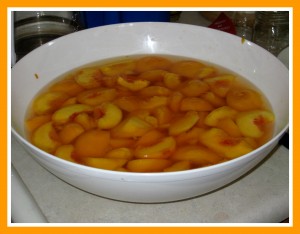
The syrup that goes into the jar with the peaches is simply sugar and water. I think it’s 2 parts water for every 1 part sugar, but I can’t remember for sure. The water and sugar went on the stove to heat until the sugar had dissolved.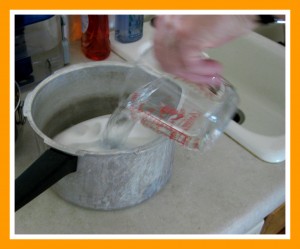
Next came the fun part of filling the jars with peaches. Glenda told me that to can competition peaches for a county fair, the peaches are cut in half and laid cut side down in the jars just so. I had no idea the positioning of the peaches in the jars was important! We weren’t canning competition peaches though, so I just stuffed those little peaches in there however they would fit. (The wide-mouth funnel we used was a new kitchen tool to me too.)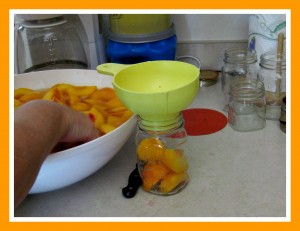
Once our jar was filled with peaches, we filled it with the sugar syrup. After putting in a couple ladle’s full, we used a butter knife to stick down against the side of the jar to make sure all the air had escaped.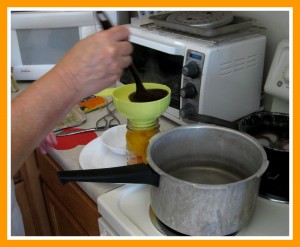
Then we topped it off, wiped off the rim of the jar, and screwed on the sterilized lid. Glenda taught me that you can reuse canning rings, but never reuse canning lids.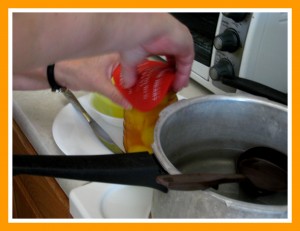
The jars were then placed in the canner and submerged in the water for the canning magic to begin. We boiled the jars for 25 minutes.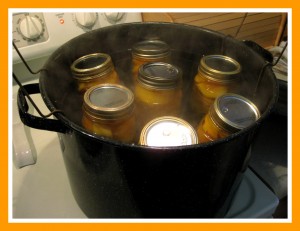
Glenda pulled out the steaming hot cans, and we put them on the counter to seal as they cooled.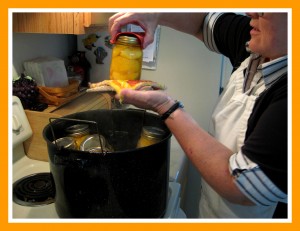
Then I got to take home some of the finished product! 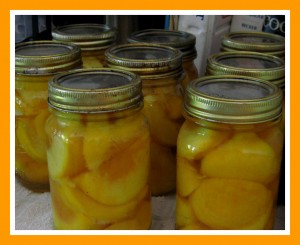
I loved the homey feeling of working in the kitchen, learning a time-honored skill that has been passed down from generation to generation.